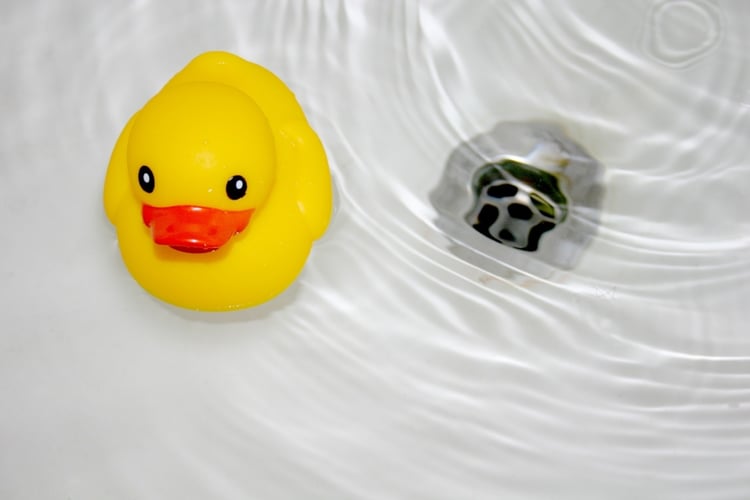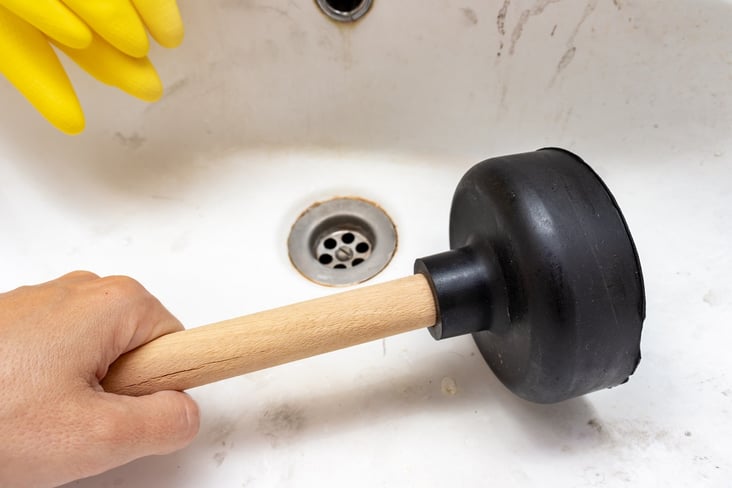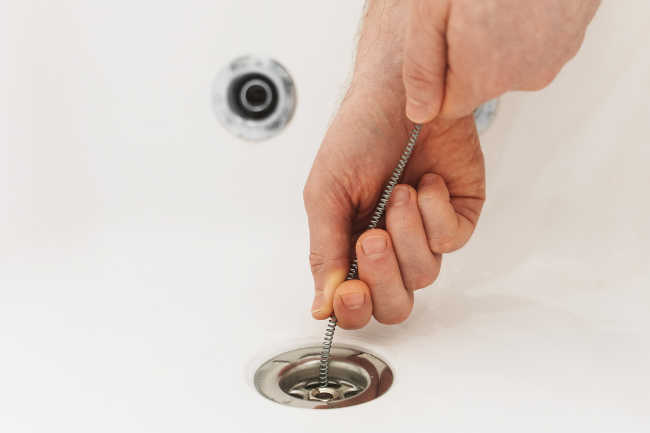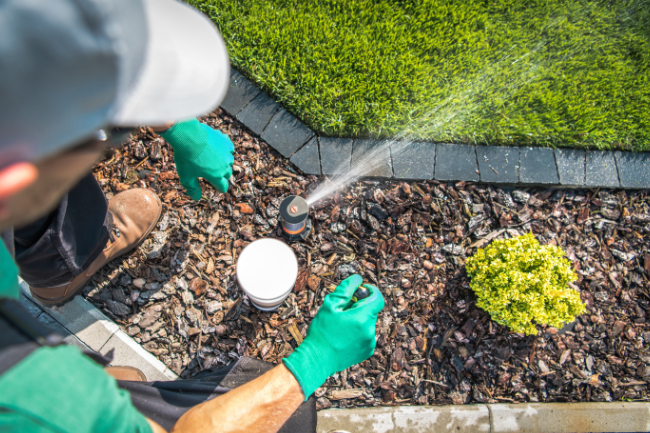How Do I Fix a Slow-Draining Bathtub?
Posted by William Heinselman on

If you have a slow-draining bathtub, then it's time to clear out your bathtub drain. Clogs and other blockages can cause your bathtub to drain slowly, which is why it's so important to clean them regularly.
However, even with regular drain cleaning, some clogs are a bit tougher to work out than others. When you have a clogged bathtub drain, it’s an easy DIY fix.
Don’t let clogged bathtub drains send you into a plumbing panic. In this article, we outline simple ways you can fix slow-draining bathtubs on your own and the best tools and techniques to use in doing so.
What Causes Slow Bathtub Drains?
There are so many different reasons why your bathtub drains slowly. Ultimately, the most common reason for a slow-draining tub is that you have a clog in your pipes. Luckily, there are a few simple drain cleaning methods to fix it that could save you from having to call a plumber.
A slow bathtub drain can result from any of the following combinations (or all of them):
- A lack of regular drain cleaning
- A buildup of hair
- A buildup of soap scum, body oil, and other bathing beauty aids
- Hard water buildup, which can make minerals stick to your pipes
If this sounds like it could be your issue, don’t reach for the caustic store-bought chemical drain cleaner just yet. There are more effective (and safer) ways to manually clear your bathtub drain.
How to Fix a Slow Bathtub Drain
While you may be tempted to purchase a commercial drain cleaning formula in a tight plumbing pinch, there are actually better ways to clear your clogged tub drain without these products. Safer, alternative techniques to chemical cleaning are important to keep in mind when dealing with clogged tubs, as overuse of chemical products can actually damage your home's pipes permanently.
While they work well in an emergency, you should avoid using these cleaners on a regular basis, and instead, practice the following steps for removing troublesome clogs from your slow-draining bathtub (broken down into categories by drain stopper type):
Types of Drain Stoppers: How to Remove Them
There are different types of drain stoppers that are often used to block water flow in your tub. Regardless of what bathtub drain stopper you have, it will need to be removed before you can pull out debris. Follow these steps to remove your specific type of stopper:
Drop Stopper
This is one of the most common types of bathtub stoppers. It has a small knob on top that allows you to open and close the drain. To remove this stopper, take off the stopper cap and remove the screw. This gives you access to debris that is caught in the drainage crossbars. Once you have access, you can easily remove any hair and debris that is clogging the drain.
Levered Bathtub Stopper
This often can be found in older Sacramento homes. This type of stopper has a lever attached to an overflow plate (also called a drain overflow panel) that may need to be removed before you can remove the stopper. It is best to use a hot water flush when clearing this type of stopper to ensure that any residual debris is washed down the pipes.
Push Stopper
This often can be viewed as the most frustrating stopper to work with because there is no clear way to remove it. This stopper cannot be extracted or unscrewed like a drop stopper.
However, you may be able to hold the base while unscrewing the stopper to successfully remove it. Once the stopper is out, you will have access to any debris. If you need to go deeper, the base also can be unscrewed.
Once you have cleared your drain, use one of these five tools to keep your drain clear.

How to Clear Clogs In Your Bathtub Drain
With drain covers and stoppers out of the way, there are a few different ways you can access or remove stubborn debris within your drain pipes. For the best drain cleaning results, we recommend using the following techniques and plumbing tools to resolve bathtub clogging.
Bent Wire
If you don’t have a drain snake, then you can DIY one with a long metal wire. A stiff wire, such as a clothes hanger, with a hook bent into its end can be used to reach into pipes and pull out clogs. However, when using a plumbing snake or a wire, be careful not to push the debris into the pipe because it can make the clog worse.
Hot Water or Homemade Flush
After you have removed hair and other matter from the drain, flush them with hot water or a vinegar and baking soda mixture. Baking soda and vinegar can break down the materials clogging your pipes. Both methods are safer than many standard store-bought chemical cleaners and can be as effective.
Toilet Plunger
This is a simple tool that every homeowner should have. Many slow drains will respond to the suction of a plunger, and this simple solution may provide a cure to your slow drain ails, especially if the cause is a mild blockage.
To properly plunge a bathtub drain, you should lower the plunger into the tub at a slight angle and then fill the tub with a few inches of water. The plunger cup should fit just over the drain hole and create a closed seal.
Use both hands to hold the handle and move the plunger up and down — rigorously enough to get things moving, but still gently enough to avoid breaking the seal. Repeat this action for about 30 seconds before removing the plunger. If, when you use a plunger, you notice that nothing changes, make sure you have enough water before giving up.
Drain Auger
Using a drain auger (sometimes called an electric pipe snake) on a tub can be an effective way to reach far into your pipes and effectively remove many clogs. However, although you may own one, you need to know how to properly use it to ensure that you do not create or increase damage to your pipes while trying to fix your slow drains. If you do not own an electric pipe snake, these are often available for short-term rentals at your local hardware store.
How to Address Slow Drains in Your House
If your home is still experiencing slow drains after you try some of the above methods — or if you have a toilet and sink that also are draining slowly — it may be an indication of a more serious situation than a simple clogged pipe.
It could be a sign of a broken sewer line, which will require the help of a professional plumber in Sacramento, like Express Drain & Sewer. Broken sewer lines can be caused by tree roots growing into your pipes, which can block the flow of water and also result in other debris clogging your sewer pipes.
We specialize in trenchless sewer line repair and replacement, a less invasive method than traditional digging methods.
Many of the homes in Sacramento are more than 100 years old, and although their sewer lines may not be that old, shifting earth, wear, and poor maintenance can take their toll. Constructed of clay, cast iron, Orangeburg, or PVC, these pipes were made to last for many years, but nothing lasts forever.
If your best effort of clearing the slow drains in your home has been unsuccessful, contact Express Sewer & Drain and we can help clean your pipes so water flows freely again. Contact us today for your household plumbing needs.
Topics: Home Plumbing, DIY, Drain Cleaning and Repair







